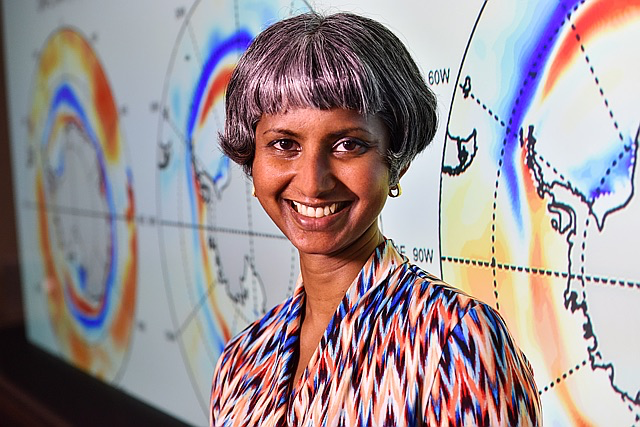A Heuristic Model of Dansgaard–Oeschger Cycles. Part I: Description, Results, and Sensitivity Studies
Published in Journal of Climate, 2014
Recommended citation: Singh HA, Battisti DS, Bitz CM. (2014). "A Heuristic Model of Dansgaard–Oeschger Cycles. Part I: Description, Results, and Sensitivity Studies." Journal of Climate. 27(12): pp 4337-4358.
Abstract: A simple model for studying the Dansgaard–Oeschger (D-O) cycles of the last glacial period is presented, based on the T. Dokken et al. hypothesis for D-O cycles. The model is a column model representing the Nordic seas and is composed of ocean boxes stacked below a one-layer sea ice model with an energy-balance atmosphere; no changes in the large-scale ocean overturning circulation are invoked. Parameterizations are included for latent heat polynyas and sea ice export from the column. The resulting heuristic model was found to cycle between stadial and interstadial states at times scales similar to those seen in the proxy observational data, with the presence or absence of perennial sea ice in the Nordic seas being the defining characteristic for each of these states. The major discrepancy between the modeled oscillations and the proxy record is in the length of the interstadial phase, which is shorter than that observed. The modeled oscillations were found to be robust to parameter changes, including those related to the ocean heat flux convergence (OHFC) into the column. Production of polynya ice was found to be an essential ingredient for such sustained oscillatory behavior. A simple parameterization of natural variability in the OHFC enhances the robustness of the modeled oscillations. The authors conclude by discussing the implications of such a hypothesis for the state of the Nordic seas today and its state during the Last Glacial Maximum and contrasting the model to other hypotheses that invoke large-scale changes in the Atlantic meridional overturning circulation for explaining millennial-scale variability in the climate system. An extensive time-scale analysis will be presented in the future.
